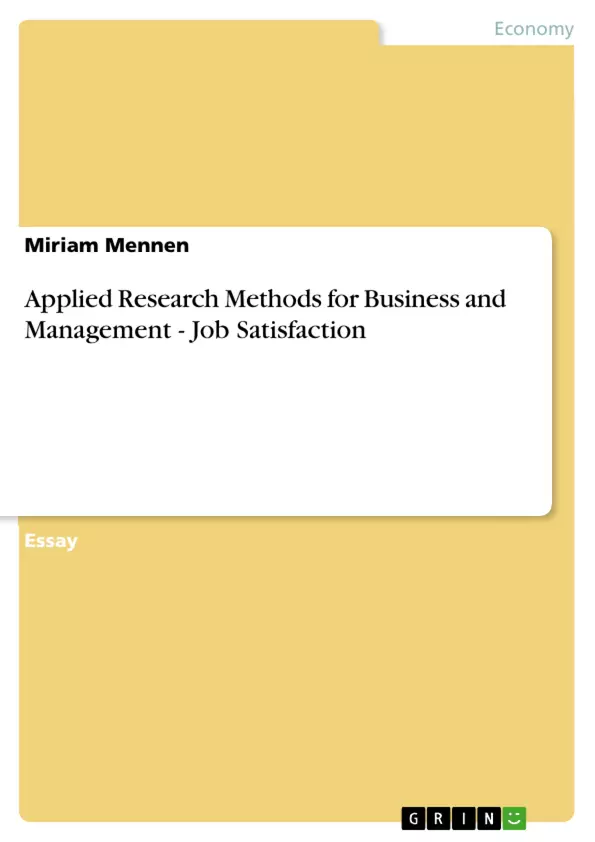The notion of job satisfaction is one of the most extensively researched topic areas in organisational management as it associates with individual and organisational outcomes.
The paper illustrates, apart form the general strategic and operational literature, a section on the impact of culture on employee motivation. The researcher will use an inductive approach with a qualitative research design. In order to measure the above mentioned variables in such a unique and complex workplace, the researcher will develop suitable interview questions and conduct interviews with employees working in the cruise market industry.
Inhaltsverzeichnis (Table of Contents)
- Introduction
- Literature Review
- Maslow's Hierarchy of Needs
- Methodology
- Research Philosophy
- Research Approach
- Research Strategy
- Data Collection
- Analysis of qualitative Data
- Conclusion
- Limitations
- Ethical Issues
Zielsetzung und Themenschwerpunkte (Objectives and Key Themes)
This study aims to investigate the factors influencing job satisfaction amongst seafarers working on cruise ships. The study will adopt a qualitative research approach to explore the complexities of employee motivation within this unique and multicultural workplace. The research will be conducted through interviews with employees working in the cruise market industry.
- Job satisfaction and its relationship to employee motivation
- The impact of cultural differences on employee motivation
- The application of theoretical frameworks such as Maslow's Hierarchy of Needs and Herzberg's Two-Factor Theory
- The influence of organizational factors on job satisfaction
- The use of qualitative research methods to gain insights into employee experiences
Zusammenfassung der Kapitel (Chapter Summaries)
The introduction provides an overview of the research topic, highlighting the significance of employee satisfaction and motivation in the context of the cruise industry. It emphasizes the need to understand the complexities of a multicultural workforce and the impact of cultural differences on employee motivation.
The literature review section delves into existing research and theoretical frameworks related to job satisfaction and employee motivation. It examines Maslow's Hierarchy of Needs and other relevant theories to provide a conceptual and theoretical foundation for the study. The section also discusses the importance of competitive advantage and the relevance of frameworks like Porter's Five Forces Model and SWOT analysis in understanding organizational performance.
Schlüsselwörter (Keywords)
The key terms and concepts explored in this study include job satisfaction, employee motivation, cultural differences, qualitative research, cruise industry, seafarers, Maslow's Hierarchy of Needs, Herzberg's Two-Factor Theory, Porter's Five Forces Model, SWOT analysis, and competitive advantage.
- Quote paper
- Miriam Mennen (Author), 2007, Applied Research Methods for Business and Management - Job Satisfaction, Munich, GRIN Verlag, https://www.grin.com/document/145368



